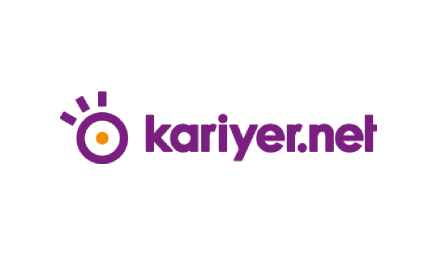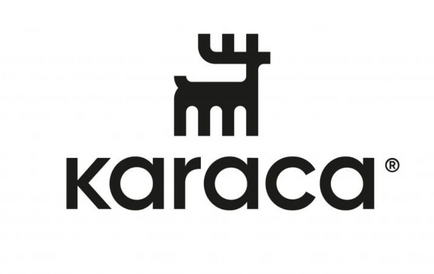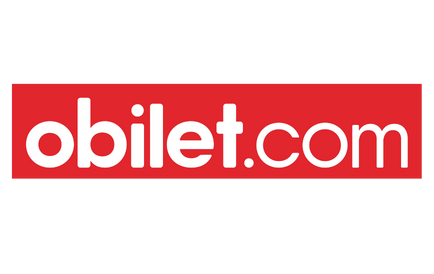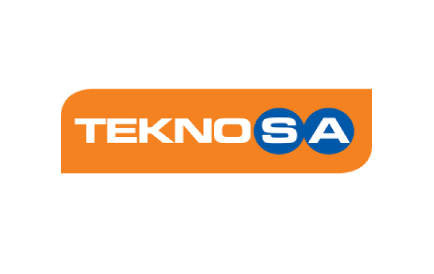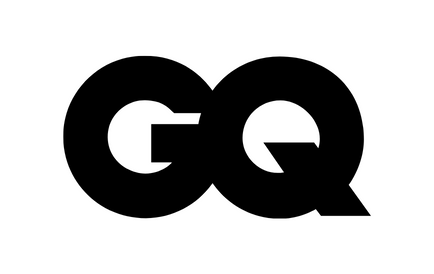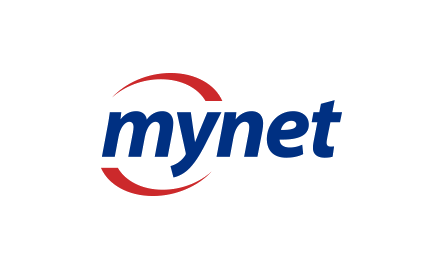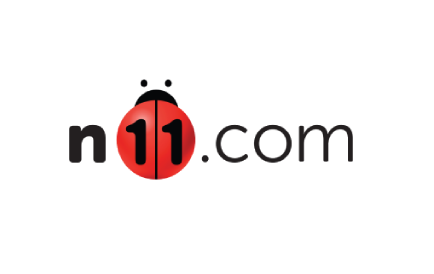
SEO PERFORMANCE TRACKING
Prepare yourself for success.
They say that if you can measure something, you can improve it.
The situation is no different in SEO. Professional SEOs track everything from rankings and conversions to lost links and more to help prove the value of SEO. Measuring the impact of your work and ongoing improvement is critical to your SEO success, customer retention, and perceived value.
It also helps you change your priorities when something doesn't work.
Start by thinking of the end
While it is common to have multiple goals (both macro and micro), it is essential to set a specific primary end goal.
The only way to know what a website's primary end goal should be is to be strong about the website's goals and/or customer needs; is to have an understanding. Good customer questions not only help you strategically direct your efforts, they also show you care.
Customer question examples:
Can you tell us a brief history of your company?
What is the monetary value of a new qualified lead?
What are your most profitable services/products (in order)?
When determining a website's primary goal, additional goals, and benchmarks, keep the following tips in mind:
Tips for setting goals
Can be measured: If you cannot observe, you cannot heal.
Be specific: Don't let vague industry marketing jargon overwhelm your goals.
Share your goals: Research has shown that writing down and sharing your goals with others increases your chances of reaching them.
Know your customer
Asking your customer the right questions is key to understanding website goals. Below, we've compiled a list of questions you can use to start getting to know your customers!
Speaking of industry marketing jargon, the SEO glossary for this section is; Make sure you're on top!
See Chapter 7 definitions
ömeasurement
Now that you have identified its primary goal, consider any additional measures that can help your site achieve its ultimate goal. Additional applicable measures will help you use your site better as you can progress in a healthier way.
Engagement metrics
How do people act when they reach your site? That's the question engagement metrics try to answer. Here are some of the most popular metrics to measure how people interact with your content:
Conversion rate
The number of conversions (for a single desired action/goal) divided by the number of unique visits. A conversion rate can be applied to everything from an email signup to a purchase and account creation. Knowing the conversion rate can help you measure the return on investment (ROI) website traffic can provide.
Time on page
How much time have people spent on your page? If you have a 2,000-word blog post where visitors only spend an average of 10 seconds, that content is less likely to be consumed (unless they're mega-fast readers). However, if a URL has a low time on page, that's bound to be bad too; is not. Think about the purpose of the page. For example, "Contact Us" It is normal for the pages to have a low average time spent on the page.
Pages per visit
Was the purpose of your page to engage readers and take them to the next step? In this case, pages per visit can be a valuable engagement metric. If the purpose of your page is independent of other pages on your site (eg, a visitor came, got what he needed, then left), then a low page per visit is normal.
&Cedil;Drop Rate
"Whether you're back" sessions indicate that the searcher has visited the page andit shows you leaving without looking any further. Many people try to lower this metric because they believe it depends on website quality, but it actually tells us very little about a user's experience. We've seen an increased bounce rate on redesigned restaurant websites that perform better than ever before. Further investigation discovered that people only come to find office hours, menus, or an address, and then come with the intention of visiting the restaurant in person. A better measure to measure page/site quality is scroll depth.
Scroll depth
This measures how far visitors scroll down individual web pages. Do the visitors reach your important content? If not, multimedia, contact forms, etc. Try different ways to provide the most important content at the top of your page, such as Also consider the quality of your content. Do you skip unnecessary words? Is it tempting for the visit to continue down the page? Scroll depth tracking can be set in your Google Analytics Trace.
You can set targets in Google Analytics to measure how well your site is reaching its goals. If your goal for a page is to fill out a form, you can set it as a goal. When the site visitor completes the advanced task, you will be able to see it in their reports.
Search traffic
Ranking is a valuable SEO metric, but measuring your site's organic performance doesn't stop there. The purpose of appearing in search is to be chosen by searchers as an answer to their queries. If you're sorting but not getting density, you have a problem.
However, how do you determine how much traffic your site gets from search? One of the surest ways to do this is with Google Analytics.
Using Google Analytics to reveal density information
Google Analytics (GA) is teeming with data - so much that it can be overwhelming if you don't know where to look. This is not an exhaustive list, but a general guide to some of the traffic data you can gather from this free tool.
Isolate organic traffic
GA allows you to view the traffic to your site by channel. This will mitigate fears caused by changes in another channel (total traffic has decreased since a paid campaign was stopped, but organic traffic remained stable).
Traffic to your site over time
GA allows you to view the total sessions/users/pageviews to your site in a given date range and compare two separate ranges.
How many times a particular page is visits
Site Content reports in GA are great for evaluating the performance of a particular page (for example, how many unique visits it received in a given date range).
Traffic from a specific campaign
For better association, you can use UTM (urchin tracking module) codes. Identify the source, agent, and campaign, then add the codes to the end of the URLs' trail. When people start clicking on your UTM code links, that data is GA's "campaigns". begins to be included in the report.
Click-through rate (CTR)
Your CTR leading to a particular page from search results (which means the percentage of people who clicked on your page from search results) can provide insights into how well you've optimized the page title and meta description. ; You can find this data in Google Search Console, a free Google tool.
Also, Google Tag Manager is a free tool that allows you to manage and embed tracking pixels on your website without having to change the code. This makes it much easier to track certain triggers or events on a website.
FOLLOW YOUR SEO SUCCESS WITH SEOART TOOL
From page optimization to link building, ranking, technical site health and more, seoart Pro,monitors your site's progress and search visibility; and helps increase your profitability. See what you can achieve with a 30-day free trial:
Üstart free trial
Additional common SEO metrics
Domain Authority and Page Authority (DA/PA)
seoart's proprietary authority metrics are powerful at a glance; It provides information and is best used as comparisons to your competitors' Domain Authority and Page Authority.
Keyword rank
The ranking position of a website for desired keywords. This should also include SERP feature data, such as what snippets and People Also Asks boxes you're sorting through. Try to avoid empty ideas such as rankings for desirable but often very vague and long-tail keywords as well as rankings for competitive keywords that don't provide conversion. /p>
Number of backlinks
The total number of links leading to your website, or the number of unique linking root domains (meaning one per unique website, as websites often link to other websites more than once). While these are both common link metrics, we recommend that you take a closer look at the quality of backlinks and link root domains your site has.
How are these metrics tracked?
Many different tools to track your site's position in SERPs, site crawl status, SERP features and link metrics such as seoart Pro and STAT; available.
SEOart and STAT APIs (among other tools) can also be pulled into Google Sheets or other customizable dashboard platforms for clients and quick SEO checks at a glance. ; It also allows you to provide a more detailed view of only the metrics you care about.
Clipboard tools such as Data Studio, Tableau, and PowerBI can also help create interactive data visualizations.
Assessing the health of a site with an SEO website audit
By understanding certain aspects of your website (its current position in search, how searchers interact with it, how it performs, the quality of its content, its overall structure, etc.), you will be able to reveal it better. SEO opportunities. Leveraging search engines' own tools can help uncover these opportunities as well as potential problems:
Google Search Console - If you haven't already, sign up for a free Google Search Console (GSC) account and verify your websites. GSC is packed with actionable reports that you can use to detect website errors, opportunities, and user interaction.
Bing Web Admin Tools - Bing Web Admin Tools have similar functionality to GSC. Among other things, it shows how your site is performing on Bing and opportunities for improvement.
Lighthouse Audit - Google's automated tool to measure a website's performance, accessibility, progressive web apps, and more. This data improves your understanding of how a website is performing. Get specific speed and accessibility information for a website here.
PageSpeed Insights - Provides website performance insights whenever possible using Lighthouse and Chrome User Experience Report data derived from real user measurement (RUM). p>
Structured Data Testing Tool - Verifies that a website is using schema markup (structured data) correctly.
Mobile-Friendly Test - Evaluates how easily a user navigates your website on a mobile device.
Web.dev - Reveals website improvement analytics using Lighthouse and provides the ability to track progress over time.
Tools for web developers and SEOs - Google often provides new tools for web developers and SEOs; so, follow new releases here.
How Do You Rank on Google?
If you want to know how to rank a website from start to finish, look no further than our How to Rank on Google checklist. Just 25 steps to rank success read our guide and see how!
Read the checklist
While we don't have room in this guide to cover all the SEO audit checks you need to perform, we cover thousands of useful topics in our comprehensive Technical SEO Certification Series. Keep the following in mind when auditing your site:
Scannability
Are your primary web pages crawlable by search engines, or are you accidentally blocking Googlebot or Bingbot via your robots.txt file? Does the website have a correct sitemap.xml file to help redirect crawlers to your primary pages?
Indexed pages
Can your primary pages be found using Google? Site:yoursite.com OR site:yoursite.com/custom page control on Google; make this question answered can help. If you find that some are missing, excluding pages that need a meta robots=noindex tag to be indexed and found in search results. Make sure it's not.
Page titles and meta descriptions
Do your titles and meta descriptions do a good job of summarizing the content of each page? How are the CTRs in the search results according to Google Search Console? Are they written in a way that entices searchers to click on your result via other ranking URLs? Which pages could be improved? Site-wide crawls are required to discover on-page and technical SEO opportunities.
page speed
How does your website perform on mobile devices and Lighthouse? Which images can be compressed to improve loading time?
plum quality
How well does the current content of the website meet the needs of the target market? Is the content 10x better than the content of other ranking websites? If not, what can you do better? Think richer content, multimedia, PDFs, manuals, audio content and more.
Website simplification can improve overall quality
Removing thin, old, low-quality or rarely visited pages from your site can help improve the perceived quality of your website. Performing a content control will help her explore these simplification opportunities.
Learn more about website simplification
Keyword research and competitive website analysis (performing audits of your competitors' websites) can provide a wealth of information about opportunities for your own website.
ÖFor example:
Which keywords are your competitors ranking for on page 1, but your website is not?
Which keywords is your website in on page 1 because it also has a snippet that comes up with what? You can provide better content and take over this excerpt.
Which websites link to multiple competitors but not to your website?
Exploring website content and performance opportunities will help develop a more data-driven SEO attack plan! Keep a constant list to effectively prioritize your tasks.
Prioritizing SEO fixes
In order to effectively prioritize SEO fixes, it is important to have specific goals that are agreed upon, first and foremost between you and your client.
While there are a million different ways to prioritize SEO, we recommend that you rank them in order of importance and urgency. What fixes can provide the most ROI for a website and help support your agreed-upon goals?
The burden of prioritization by Stephen Covey, author of The 7 Habits of Highly Effective People; developed a handy time management guide to alleviate:
Immediate, Önot humid, Ömoist I: Urgent & Öhumid &Cedil;dayAnnex II: Not Urgent and Not Important Quarter III: Urgent and Not Important Fourth; Quarter: Not Urgent and Not Humid
Small, putting out urgent SEO fires may be most effective in the short term, but this often results in neglecting important non-urgent fixes. Urgent and Not Important are the ones that will eventually move the needle for a website's SEO. Do not delay them.
Non Urgent Not Urgent Öimportant Primary page issues, high volume issues Non-primary page issues, medium volume issues Not Important Customer reports (unrelated to targets), blank keywords Video sitemaps, meta keywords tag
SEO planning and execution
Most of your success depends on planning your SEO tasks effectively. Free tools like Google Sheets can help you plan your SEO practice (we have a free template here), but you can use whatever method works best for you. Some people prefer to plan their SEO tasks on their Google Calendar, a kanban or hack board, or a day planner.
Use what suits you and stick with it.
Measuring your progress through the aforementioned metrics will help you monitor your activity and turn your SEO efforts when something goes wrong. For example, you change the title and meta description of a master page, only that page's CTR decreases; Let's assume you notice. Maybe you've changed it to something too vague or strayed too far from the topic on the page - it might be good to try a different approach. Keeping an eye out for drops in rankings, CTRs, organic traffic, and conversions will allow you to manage such glitches before they become a bigger problem. It can help.
SEO client's longevity; communication is very important
Many SEO fixes are applied unnoticed by a client (or user). That's why it's so important to use good communication skills around your SEO plan, framework and benchmarks, as well as frequent check-ins and reports when you're working with it. >
Getting Started for SEO; Congratulations on completing the entire guide! Now it's time for the fun part. As the next step in practice, we recommend that you take the initiative to start your own SEO project. Read on for our recommendations!
"Executing without strategy is pointless. Strategy is useless without execution." - Morris Chang
Üfree SEO planning çworksheet
Start your SEO planning with the çworksheet template we provide below. Make a copy and edit it according to your needs!
Download the template
Practice, practice, practice
The best thing you can do to build your confidence, skills and abilities is to put in a lot of effort. If you are serious about SEO and hope to serve customers one day, there is no better place to start than your own website, whether blogging is a hobby or you need to create a personal freelance worksheet.
We've put together a quick to-do list that you can use to guide your next steps in the vast and wonderful world of SEO:
Before starting a new project, determine your site's information architecture, design, user experience and other necessary aspects. Please read the Strategic SEO Decisions to Be Made Before Website Design and Creation, and on Friday; We recommend watching our Whiteboard, Starting a New Website: Your SEO Checklist.
Continuing Getting Started for SEO; Follow the steps in the guide:
Understand your goals and SEO fundamentals
Make sure your site is crawlable and indexable in search
Do extensive keyword research
Make sure your on-site optimizations are up-to-daten
Perform any necessary technical SEO optimizations or audits
Gain links and establish your site's authority
Efficiently prioritize and use the right metrics to measure fame
Test, refresh and test again! Many SEOs have test sites where they challenge SEO norms or try new types of optimization tactics. Apply this by creating a website today and create a meaningless word (a word with probably zero search volume and no competition), then see how quickly you can rank it in search results . From here, all other types; You can try the SEO test.
Take on more difficult tasks, test refreshed content for other platforms, set comprehensive goals, and become more powerful. Compete with competitors.
Consider taking the extra step and challenging yourself to learn technical SEO.
Find a community where you can safely share, discuss, and seek help from your experiences. seoart's Q&A Forum, Traffic ThinkTank, Search Engine Journal's SEO Experts to Follow, and finding SEO meetups near you are great options to get started.
Take time to evaluate what works and what doesn't after an SEO project. How can you do things a little differently in the future to improve your performance?
Data is your best friend when it comes to tracking your SEO progress. You can use seoart Pro's SEO analysis and research tools to closely monitor rankings, link building, technical site health, and more. Put your new SEO skills into action with the 30-day free trial of seoart Pro!
What's next?
Now that you've built a solid SEO foundation, learn how to rank your website from start to finish.
“SEO requires attention and patience. To be successful, follow the changing technological developments closely.”
– SEOART TEAM
The beginning here isç By following these seven steps with our guide, we can achieve a successful SEO:
- Getting Started Guide : Crawl accessibility so engines can read your website
- SEO 101 : Engaging content that answers searchers' questions
- SEO Glossary : Snippet/schema markup to stand out in SERPs
- Keyword Research : Keyword research is a vital part of SEO that can help you to drive more traffic and conversions to your website. By understanding your target audience's search behavior and optimizing your content with the right keywords and phrases, you can improve your website's visibility and ranking in search results. So, start your keyword research today and see the difference it can make to your SEO efforts.
- Browsing, Indexing, Sorting : Keyword optimized to attract searchers and search engines
- On-Page SEO : Share-worthy content winning links, quotes, and amplifications
- Technical SEO : Title, URL and description to achieve high CTR in rankings
- Link Building and Authority : Snippet/schema markup to stand out in SERPs
- Measurement and Monitoring : Measurement and Monitoring
- :
- :
- :
- :
- :
- :
- Interaction to Next Paint (INP) :
- :
- :
- :
- :
- :
You may also be interested in
Find Out Your SEO Score!
Sign up for our e-newsletter form and confirm your e-mail address to be one of the first to access the newsletters we prepare free of charge as seoart.
Fill out the form to get detailed information about search engine optimization.ABOUT Seoart





